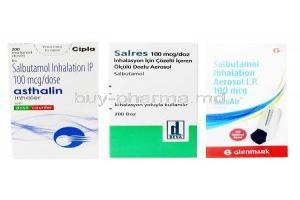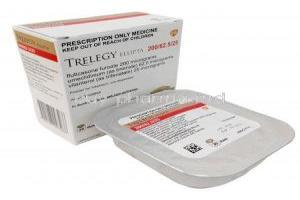Carbocisteine
- I. Introduction
- II. Composition of Carbocisteine
- III. Uses of Carbocisteine
- IV. Mechanism of Action: How Carbocisteine Works
- V. Dosage and Administration
- VI. Side Effects of Carbocisteine
- VII. Off-Label Uses of Carbocisteine
- VIII. Drug Interactions
- IX. Contraindications and Warnings
- X. Administration in Special Populations
- XI. Handling and Storage
- XII. Overdosage: Signs, Symptoms, and Management
- XIII. Important Precautions
- XIV. Careful Administration
I. Introduction
Overview of Carbocisteine: Carbocisteine is a medication that improves symptoms associated with chronic obstructive pulmonary disorders and other respiratory conditions. It works by reducing the thickness of mucus, making it easier to cough up.
Historical Background: Since its introduction in the mid-20th century, Carbocisteine has transformed from a compound into a crucial component of respiratory therapy. Through clinical trials and studies, its effectiveness and safety have been well established.
II. Composition of Carbocisteine
Chemical Structure and Properties: Known chemically as S carboxymethyl L cysteine, Carbocisteine stands out due to its sulfhydryl group, which breaks disulfide bonds within mucus glycoproteins.
- Its molecular formula, C5H9NO4S, provides insights into its nature and composition.
- Carbocisteines' ability to dissolve in water and alcohol makes it highly versatile for formulations.
Available Formulations: Carbocistine can be found in formulations on the market, such as oral syrups, capsules, and effervescent tablets. These options cater to a range of individuals.

III. Uses of Carbocisteine
Carbocisteine is a mucolytic agent that is mainly prescribed to provide relief from symptoms in cases of bronchitis and other conditions where there is an excessive production of abnormal mucus 1. Its effectiveness is especially notable in conditions where there is a thickened mucus, such as COPD and asthma 1. Carbocisteine works by reducing the thickness of mucus, which greatly improves the clearance of airways. As a result, it enhances lung function and improves the comfort of patients 1.
IV. Mechanism of Action: How Carbocisteine Works
Pharmacodynamics: The main reason Carbocisteine works as a mucolytic is because it can change the properties of secretions. It does this by modifying the glycoprotein fibers in the mucus matrix.
Carbocisteine makes the mucus less thick and helps prevent excessive mucus production, which is beneficial for respiratory management.
V. Dosage and Administration
Here are some recommended dosage guidelines for Carbocisteine based on age groups. The usual dosage ranges from 750 mg to 1500 mg per day, split into doses for adults.
Regarding children, the dosage is adjusted based on their age and body weight.
If a patient has impaired kidney or liver function, it may be necessary to adjust the dosage of Carbocisteine to minimize any risks.
Carbocisteine can be taken orally with or without food, following the instructions to achieve the best therapeutic results.

VI. Side Effects of Carbocisteine
Common side effects of carbocisteine include diarrhea, nausea, and stomach upset, which can happen to 1 in 10 people 1. Serious side effects of carbocistine are rare. However, if you experience blood in your vomit, black and tarry stools, or any signs of a serious allergic reaction such as facial swelling, difficulty breathing, or skin rash, seek medical attention immediately 1.
VII. Off-Label Uses of Carbocisteine
New and Exciting Research: Recent studies suggest that Carbocisteine may have applications in conditions besides typical respiratory disorders, prompting further investigation.
- Exploration through Case Studies and Clinical Trials: Clinical trials are looking into how effective carbocistine can be in new therapeutic areas. These trials are helping us gain an understanding of the versatility of this molecule.
- Ethical Factors to Consider: When using Carbocisteine off-label, it is important to consider ethical considerations. This includes ensuring consent from patients and implementing rigorous monitoring protocols.
VIII. Drug Interactions
Potential Interactions with Drugs: It is essential to be aware that Carbocisteine could potentially affect the effectiveness of antitussive agents and other mucolytics.
If you have a history of ulcers or asthma, it is advisable to use Carbocisteine with caution. To ensure co-administration, it is crucial to thoroughly review the patient's medication history and avoid any potential adverse drug interactions.
IX. Contraindications and Warnings
Absolute Contraindications: Avoid using Carbocisteine if you have a known allergy to the medication or if you currently have a peptic ulcer disease. It's not recommended when mucus secretion plays a role in maintaining airway function.
Precautionary Warnings: Be cautious when giving carbocistine to patients with a history of bleeding or bronchospasm. If you have alcoholism, malnutrition, or liver problems, it's advisable to seek medical supervision.
Special Population Considerations; Extra care is needed when prescribing Carbocisteine to individuals with compromised kidney function or those taking medications simultaneously, as they may be more sensitive or at higher risk.
X. Administration in Special Populations
- When it comes to elderly patients, it is essential to use caution when administering Carbocisteine due to the higher likelihood of kidney or liver problems.
- Depending on the patient's health, dosage adjustments may be necessary; for women and those who are breastfeeding, the safety of using Carbocisteine has not been definitively established. It should only be used if the potential benefits outweigh any risks.
- Regarding children, it is advisable to consult with a pediatrician before using Carbocisteine. The dosage should be carefully adjusted based on the child's weight and age.
XI. Handling and Storage
To ensure the stability and effectiveness of Carbocisteine, it is recommended to store it at room temperature, away from light and moisture. The shelf life of Carbocisteine may differ depending on its formulation. Following the expiry date mentioned on the packaging is essential for safety and effectiveness. To avoid contamination or accidental ingestion, expired or unused Carbocisteine should be disposed of responsibly by local regulations.

XII. Overdosage: Signs, Symptoms, and Management
Identifying Excessive Dose: Signs of taking too much carbocistine may include discomfort in the gastrointestinal tract, nausea, and vomiting. In some situations, low blood pressure and palpitations may occur.
Emergency Response: If there is a suspicion of an overdose, seeking medical attention is vital. The treatment focuses on addressing the symptoms and providing support, emphasizing proper respiratory and cardiovascular function.
Long-term Risks of Overdosing: Prolonged excessive dosing can result in serious complications such as systemic toxicity and organ damage. Continuous monitoring and long-term follow-up might be necessary.
XIII. Important Precautions
Before starting carbocistine treatment, it is essential to conduct a medical assessment to check for any conditions that may prevent its use and evaluate the potential risks of adverse reactions. It is recommended to monitor respiratory function, gastrointestinal symptoms, and overall health during treatment to ensure Carbocisteine's safe and effective utilization. Additionally, patients are encouraged to adopt a lifestyle that includes staying properly hydrated and following a balanced diet to maximize the benefits of carbocistine therapy.
XIV. Careful Administration
Proper Administration Steps: Ensuring dosing and following prescribed schedules are crucial. Educating patients on administering medications, especially in liquid forms, is essential.
Preventing Common Mistakes: Avoiding errors like doubling the dosage or improper storage is essential. These mistakes can impact the effectiveness and safety of the medication.
Patient Adherence: Educating patients about the significance of compliance with their treatment plan, potential side effects, and the importance of follow-ups improves treatment outcomes and reduces the risk of complications.









